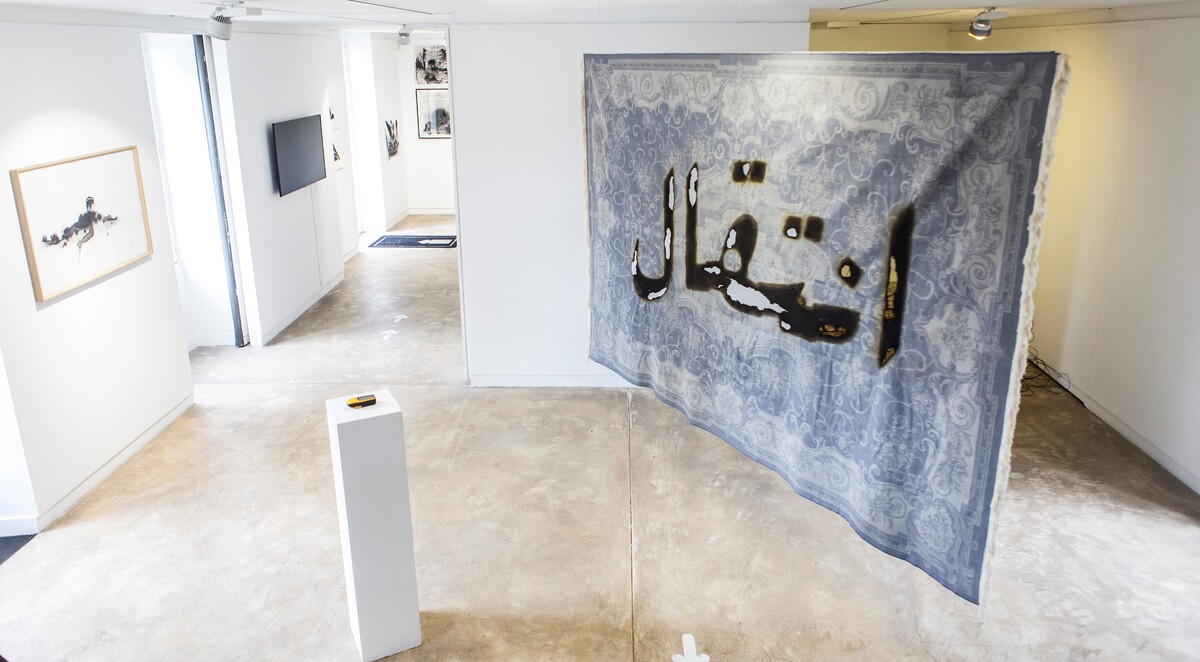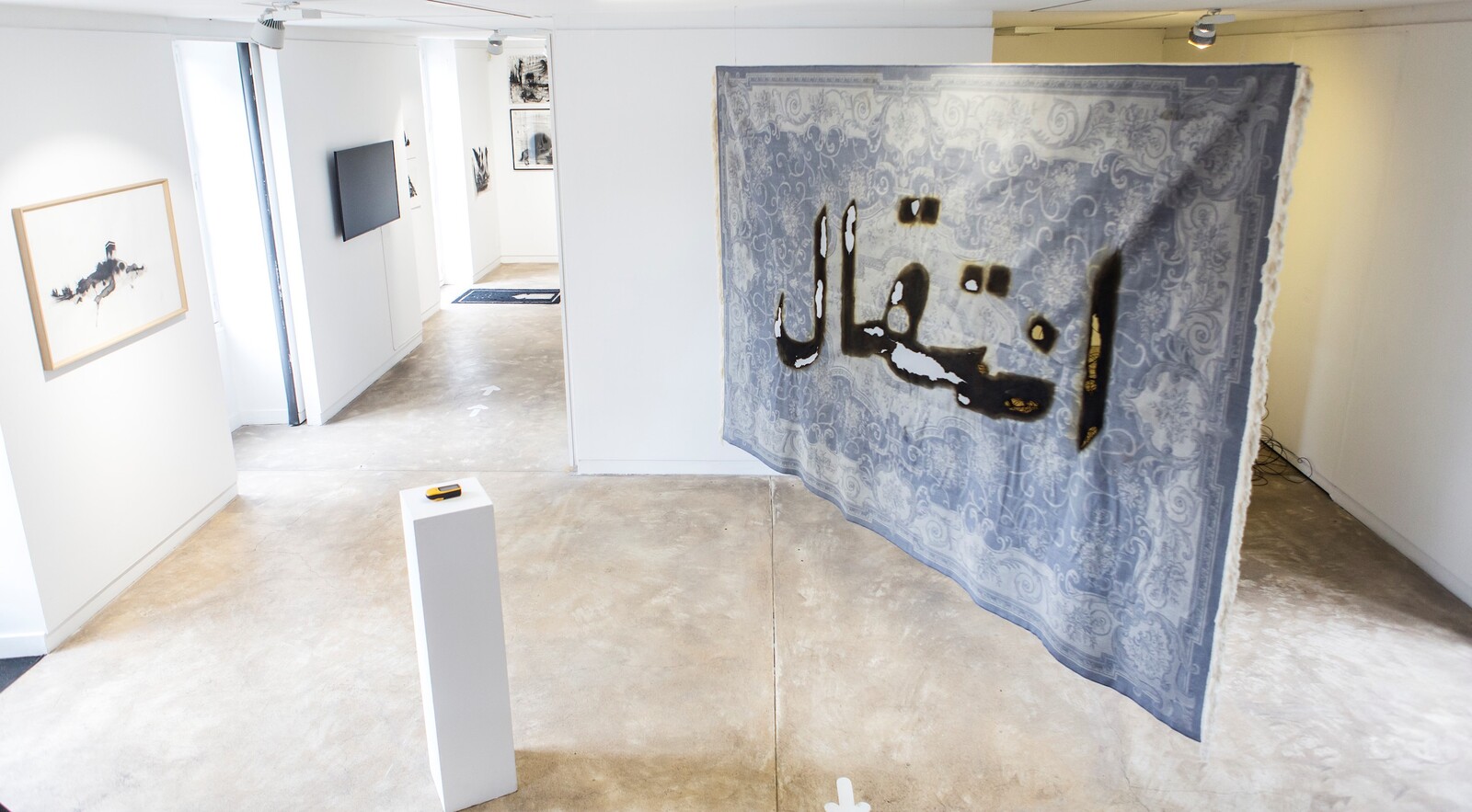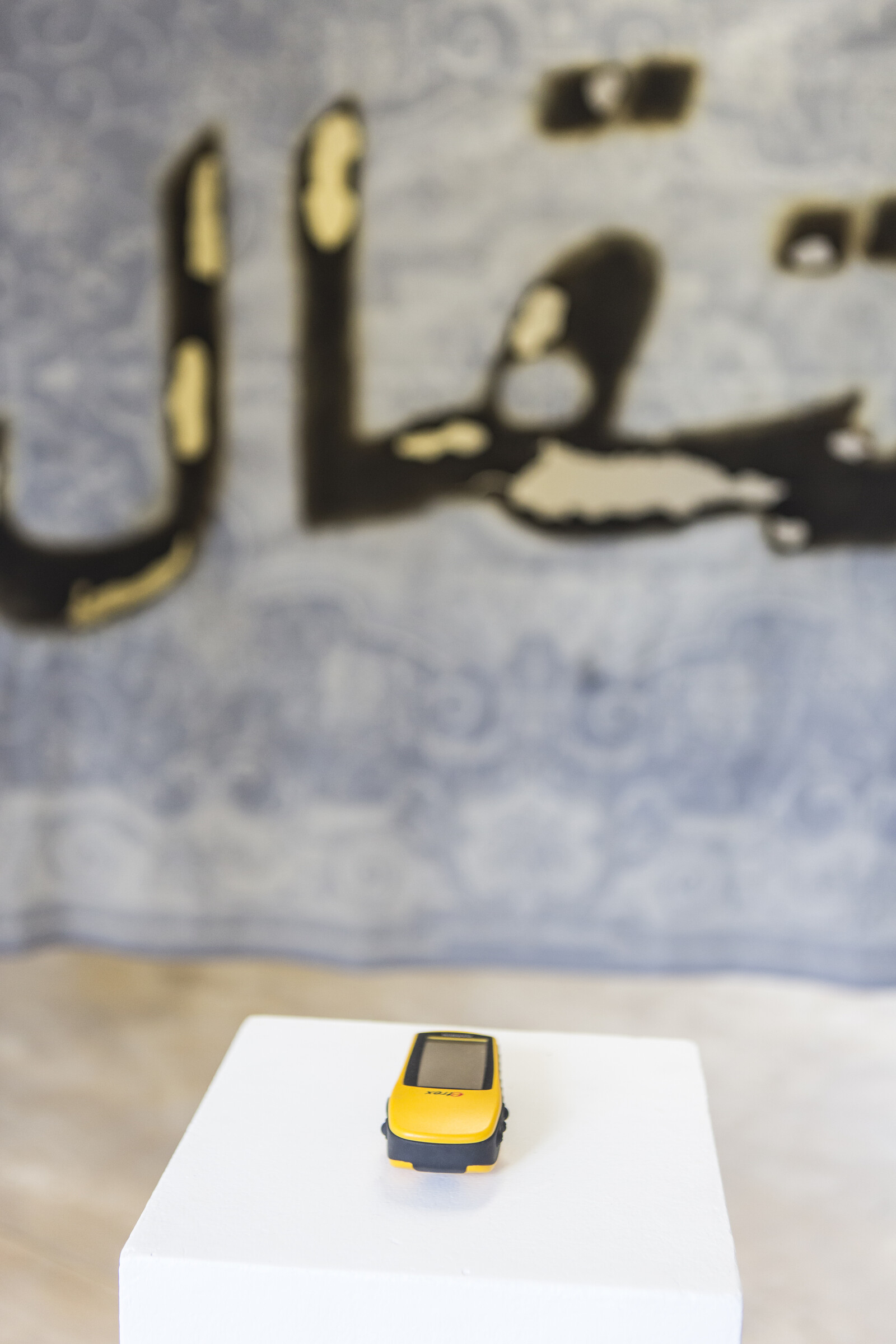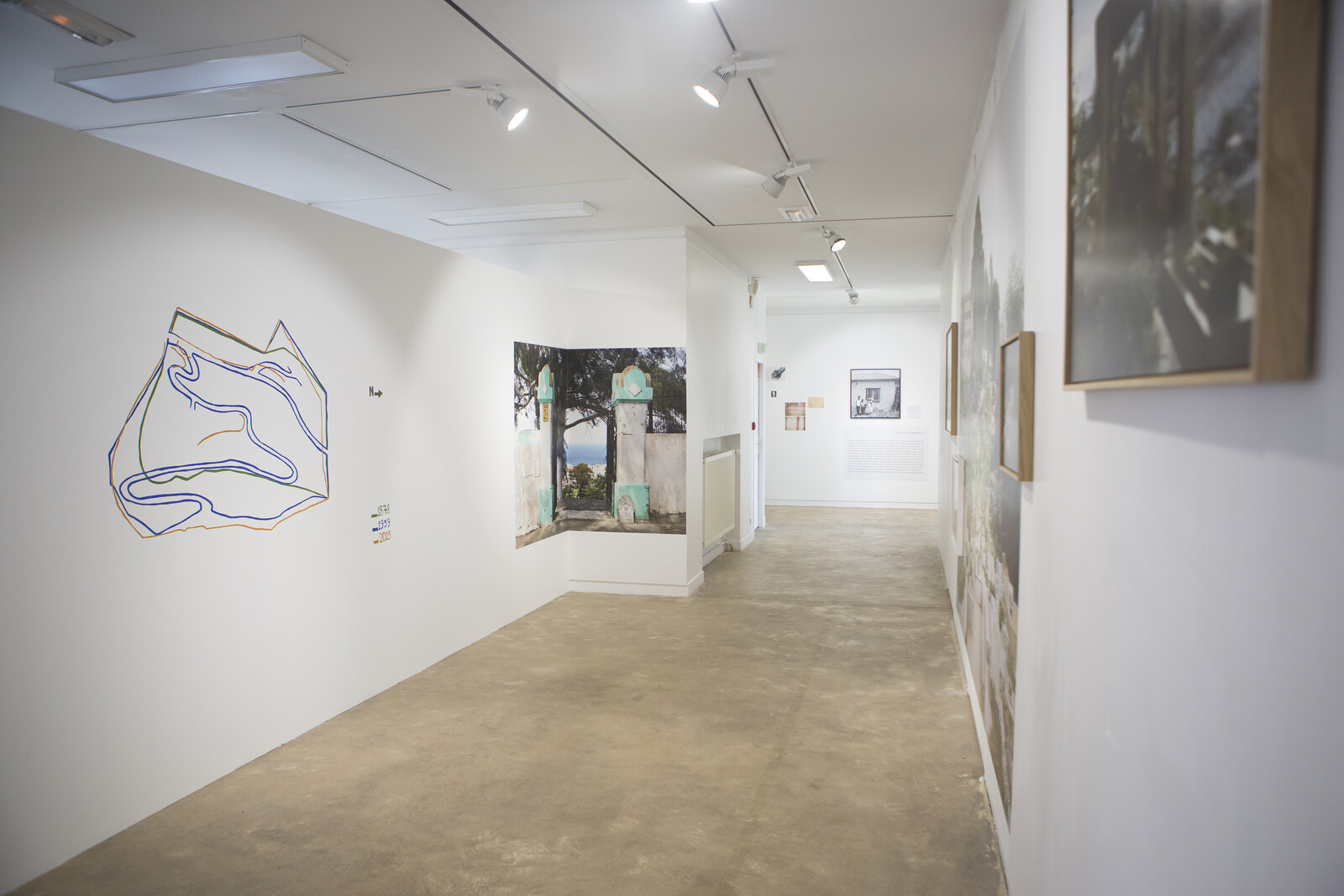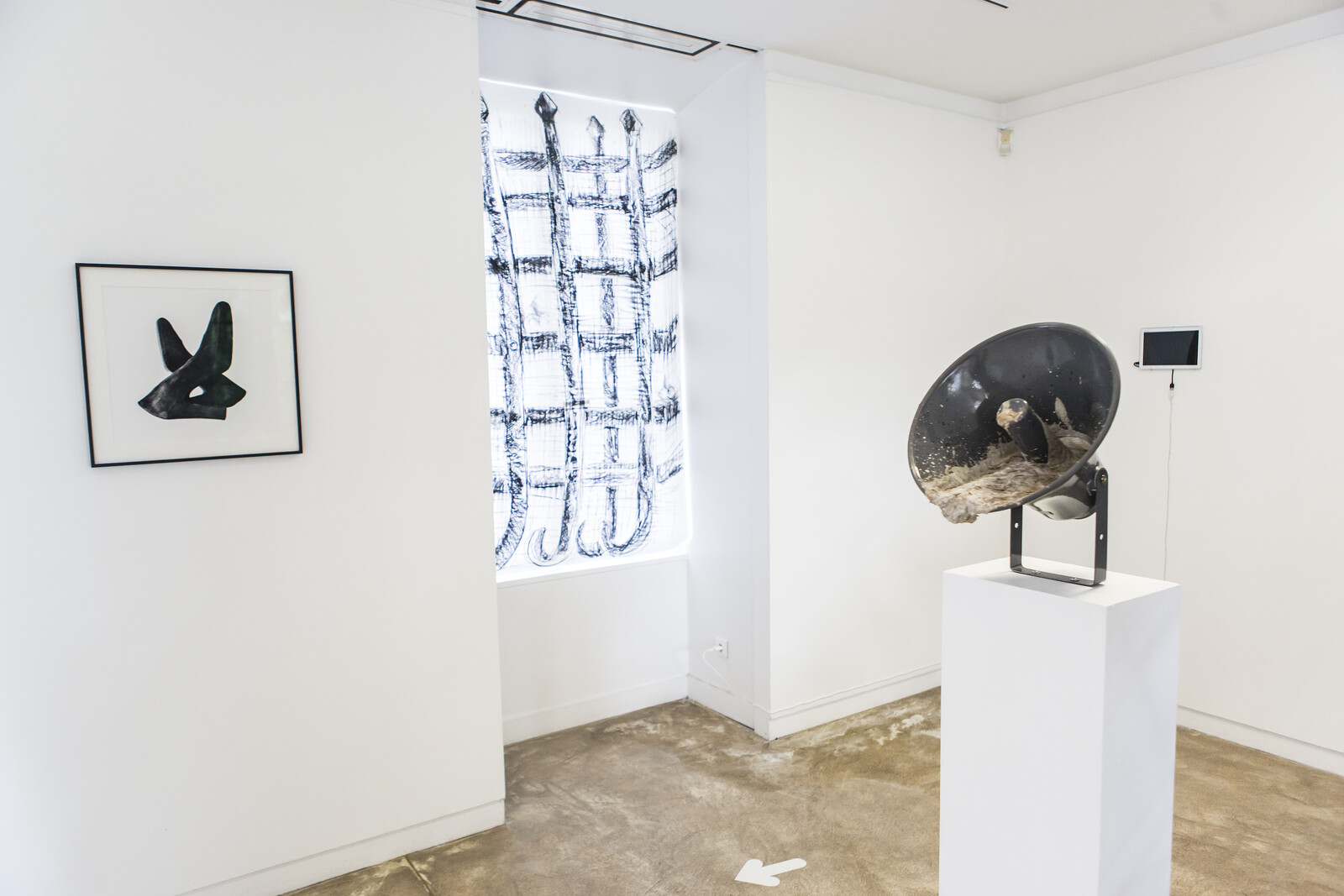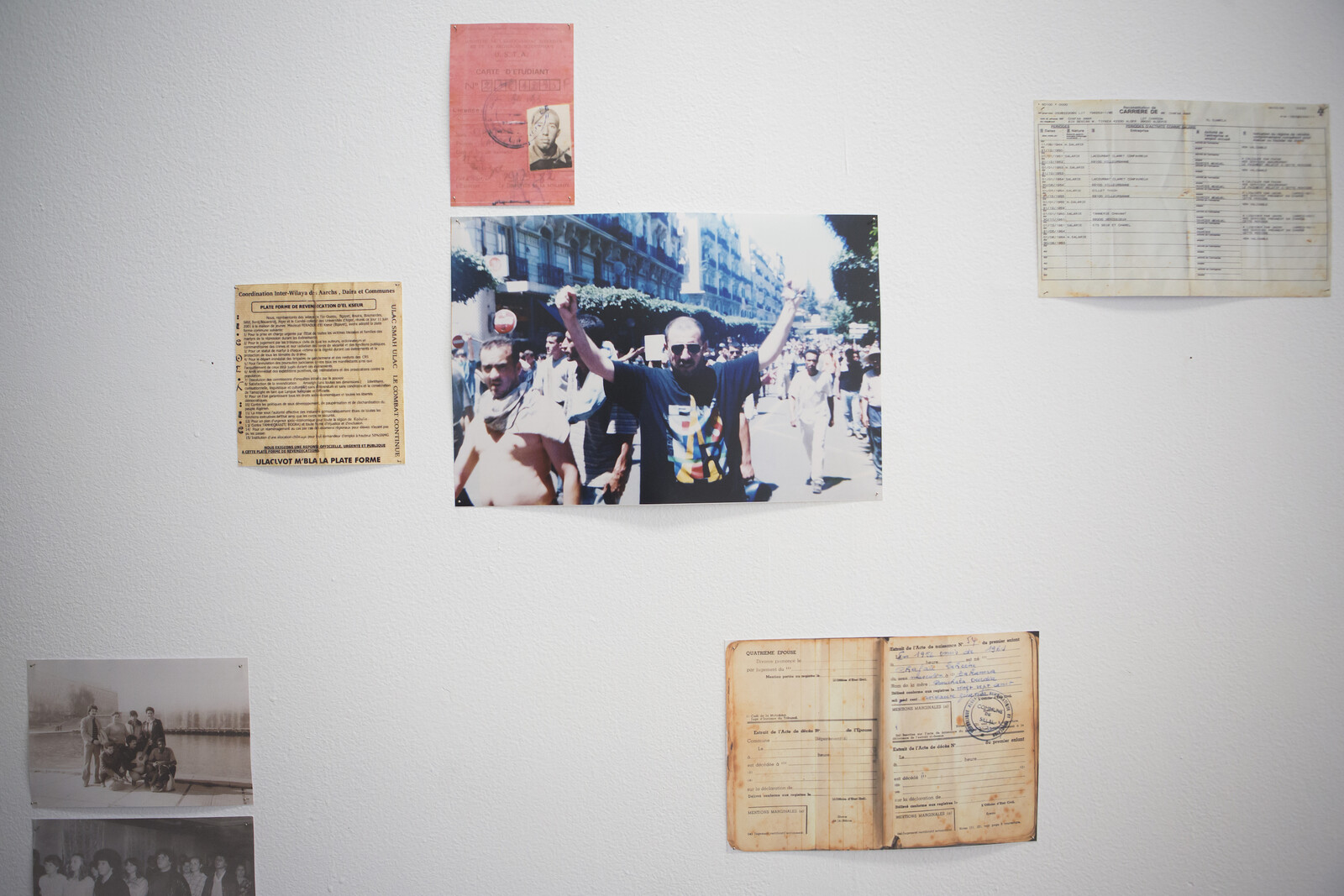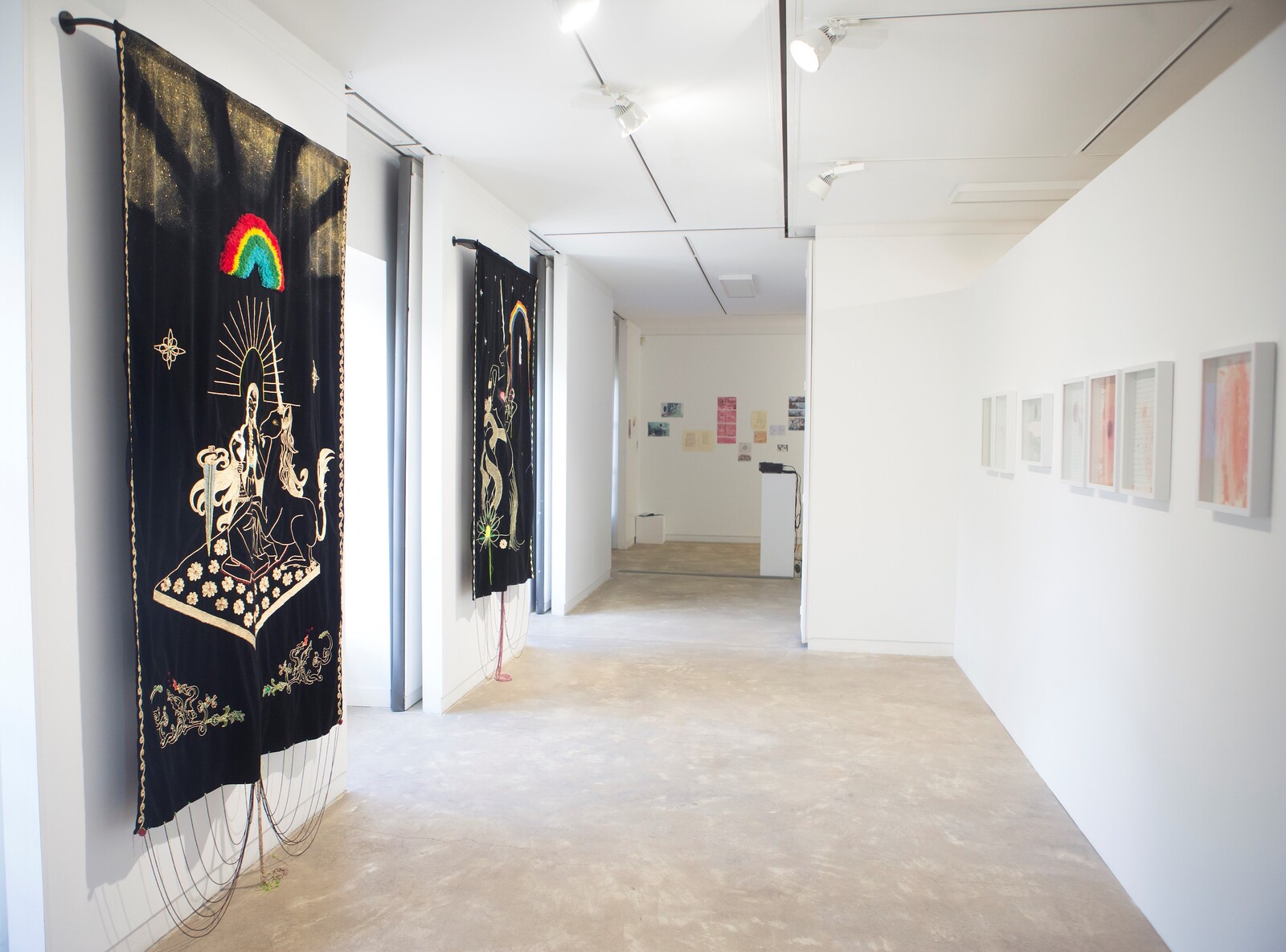At the entrance to the Centre d’Art Contemporain de Malakoff on the outskirts of Paris, I am met with a mass-produced, generic “Oriental-style” rug into which an Arabic word has been burned, a word which transliterates to inteqaal. It can mean the movement of persons from one country or place to another, or the transition from life to death. It also describes the time when something ends, such as the end of a regime or the end of belonging resulting from immigration and exile. Oran-based artist Sadek Rahim burned the word into the rug—in some places straight through it—by dripping refined petroleum made from Algerian crude oil into its synthetic ground and then setting it on fire. The rug is part of Rahim’s installation Mouvement (2020), which encompasses a slim plinth standing in front of the rug with a GPS Garmin 73 device sitting atop it. This model is the one most used by harragas [burners], the North Africans who destroy their papers and cross the Mediterranean in search of economic stability.
Rahim’s work is thus centered on a word that marks a slippage between physical and metaphysical transitions. It introduces a group exhibition entitled “quelque part entre le silence et les parlers” [somewhere between the silence and the spoken word], curated by French art critic and philosopher Florian Gaité, about how artists associated with Algeria and its diaspora represent language. In the country, one is often left with the impression of being submerged in constant, multi-lingual conversation, with Amazigh and Arabic dialects crossing French, Turkish, Spanish, and Italian. Despite a concerted effort by the government over the last three decades to Arabize public education and discourse as a way of asserting independence from Europe and solidarity with Pan-Arabism, Arabic remains only one element in a complex linguistic ecosystem. Gaité locates the exhibition at the point of this structural contradiction, which is historically determined and politically charged, between the speakable and the unspeakable in Algeria.
Amina Menia’s photographic installation Lost Qibla (2017) features several large photomurals depicting the El Kettar cemetery, built in 1838 on the heights of the Bab El Oued neighborhood of Algiers to replace a much older burial site destroyed during the violent conquest of the city by the French in 1830. The cemetery’s sloping hills and picturesque views of the Mediterranean are seductive enough, almost, to make one forget that its site was dictated by a French colonial prohibition of the construction of Muslim cemeteries on flat land because any large gathering of people constituted a revolutionary threat. The term qibla refers to the correct orientation in space to face the Kaaba in Mecca. The qibla is used for daily prayers, but also to orient graves so that the soles of the deceased’s feet are facing toward the Sacred Mosque.
Menia’s work refers to a collective loss of orientation during the Black Decade, a period of violent civil unrest from the early 1990s through the beginning of the 2000s, when people were dying too fast to maintain El Kettar’s orthogonal order. Its graves now face in multiple directions, making it impossible to visit some graves without stepping on others. Though no visitors to the cemetery are represented in the photographs, Menia’s work seems to conjure a constant murmur of apology from mourners disturbing the peace of the dead as they find their way across the chaotically laid graves to their loved ones.
At the top of stairs leading to the second floor, a striking typographic installation by Marseille-based graphic designer Walid Bouchouchi fills an entire wall. Fono-type (2018) is an alphabet Bouchouchi created by fusing Arabic, Latin, and Amazigh scripts that concretizes the créolization of Algeria’s three principal languages. Bouchouchi’s utopian alphabet, constructed with irreverent confidence, proposes the fictive linguistic system as an ideogram for the possibility of inter-community dialogue based on a notion of Algeria as a multicultural society.
In a triptych of three paper collages commissioned for the exhibition entitled Un Chant secret (A secret chant, 2021), Moscow-born artist Louisa Babari uses images found in magazines and newspapers from the 1970s to represent unspoken historiographies that continue to echo in today’s Algerian society. Each collage forges a semiotic link between things often considered disparate: the War of Liberation and the state-sanctioned use of torture after its conclusion; Soviet iconographies that influenced the Algerian collective imagination as well as its foreign policy; and the two faces of architecture in the desert, the ancient fortresses built along trade routes through the Sahara and the minimalist infrastructure of the oil and gas industries that fueled Algeria’s expansion after independence. Like a chant that mesmerizes singer and audience alike through its oblique use of language, Babari’s work relays an affect that is both euphoric and threatening. The historical associations Babari draws out here are the secrets at the foundation of Algerian national identity after independence; open discussion about them would undermine a narrative crucial to the current government. Yet when silenced, these histories also form an effective barrier to the exploration of collective memory of trauma.
The singed word, the murmured apology, the jubilantly noncompliant hybrid letter, and the low humming desistence of archival printed matter—these are a few of the characters in Gaité’s expansive mis-en-scène of language. “quelque part entre le silence et les parlers” is dedicated to Algeria, yet the work it presents refuses to assign authority to any singular discourse. The exhibition’s most successful aspect is the way it opens the non-native speaker—of whatever nationality—to the complexity of history, spoken language, and aesthetic experimentation in Algeria. Its generous definition of the spoken word proposes an encounter that requires translation and which is nevertheless haunted by that which remains incomprehensible in the wake of translation.
